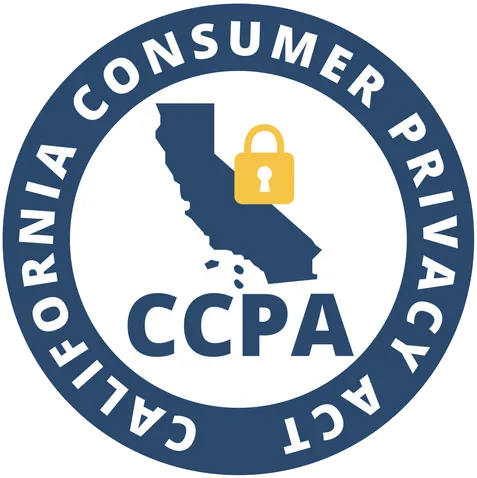The Microsoft interview process plays a central role in the company’s broader talent strategy, which continues to shape hiring standards across the global technology sector. With a workforce exceeding 228,000 employees in 2024, marking a 3.17% increase from the previous year,[1] Microsoft demonstrates a sustained commitment to attracting and retaining top-tier talent through structured, values-driven recruitment practices. This article provides a comprehensive analysis of the Microsoft interview process, detailing its guiding principles, multi-stage format, and integration of responsible AI. It also examines the company’s flexible work policies, cultural framework, diversity and inclusion programs, and innovative use of technology in hiring. Together, these elements highlight how Microsoft’s approach to recruitment serves as a benchmark for modern, inclusive, and scalable talent acquisition strategies.
What is the Microsoft Interview Process?
The Microsoft interview process is a comprehensive and structured approach designed to gauge a candidate's technical skills, cultural fit, and potential to thrive in Microsoft's dynamic environment. The process typically begins with an initial phone or virtual screening conducted by a recruiter or hiring manager. This focuses on your resume and general fit for the role, sometimes including a brief technical assessment.
Following screening, candidates often participate in one or more technical interviews. These sessions test problem-solving abilities, coding skills, and understanding of algorithms and data structures. For technical roles, preparing for whiteboard sessions or online coding platforms is essential. Successful candidates may then be invited to an on-site (or virtual) loop, which includes multiple interview rounds. Each session evaluates different competencies: technical knowledge, leadership ability, and alignment with Microsoft's core values.[2]
Key Aspects of Microsoft Interviews:
- Technical Evaluation: Focuses on problem-solving, coding, and system design.
- Behavioral Assessments: Test candidates’ ability to work in teams and their fit with Microsoft’s culture.
Types of Interviews at Microsoft:
- Phone Screen: Initial technical and behavioral interview.
- On-site Interviews: A series of technical and team-based assessments.
- Interview loop: In-depth evaluation involving multiple interviewers.[2]
Microsoft Interview Process: Step by Step
- Application Review: Once applications are submitted, they're reviewed by the hiring team and tracked via the Action Center (Microsoft’s online applicant portal). Some roles may include a brief screening step before interviews, depending on volume and fit. Due to high applicant volume, individual feedback isn't typically provided, but accessibility requests are always supported.[3]
- Interview: Interview steps vary by role, but candidates should be ready to share relevant experiences, skills, and work samples. Expect 2–4 interviews with team members or cross-functional partners, held virtually or in person. Afterward, recruiters will guide candidates on next steps and timing; prep resources are on the Interview Tips page.[3]
- Offer: Candidates receive offer documents via email or through the Action Center, depending on location. Recruiters and hiring managers are available to walk through details and answer questions. Microsoft encourages reviewing the full Total Rewards package before committing.[3]
- Pre-onboard: After accepting the offer, a recruiter coordinates with the candidate and hiring manager to confirm the start date. They assist with tasks like relocation, work authorization, and required paperwork. This stage ensures everything is ready before the candidate’s first day.[3]
- Hired: New hires receive an onboarding plan and are paired with a dedicated buddy for support. Managers help guide the transition into the new role from day one. AskHR is available throughout to assist with any questions or needs.[3]
Role‑Specific Interview Processes
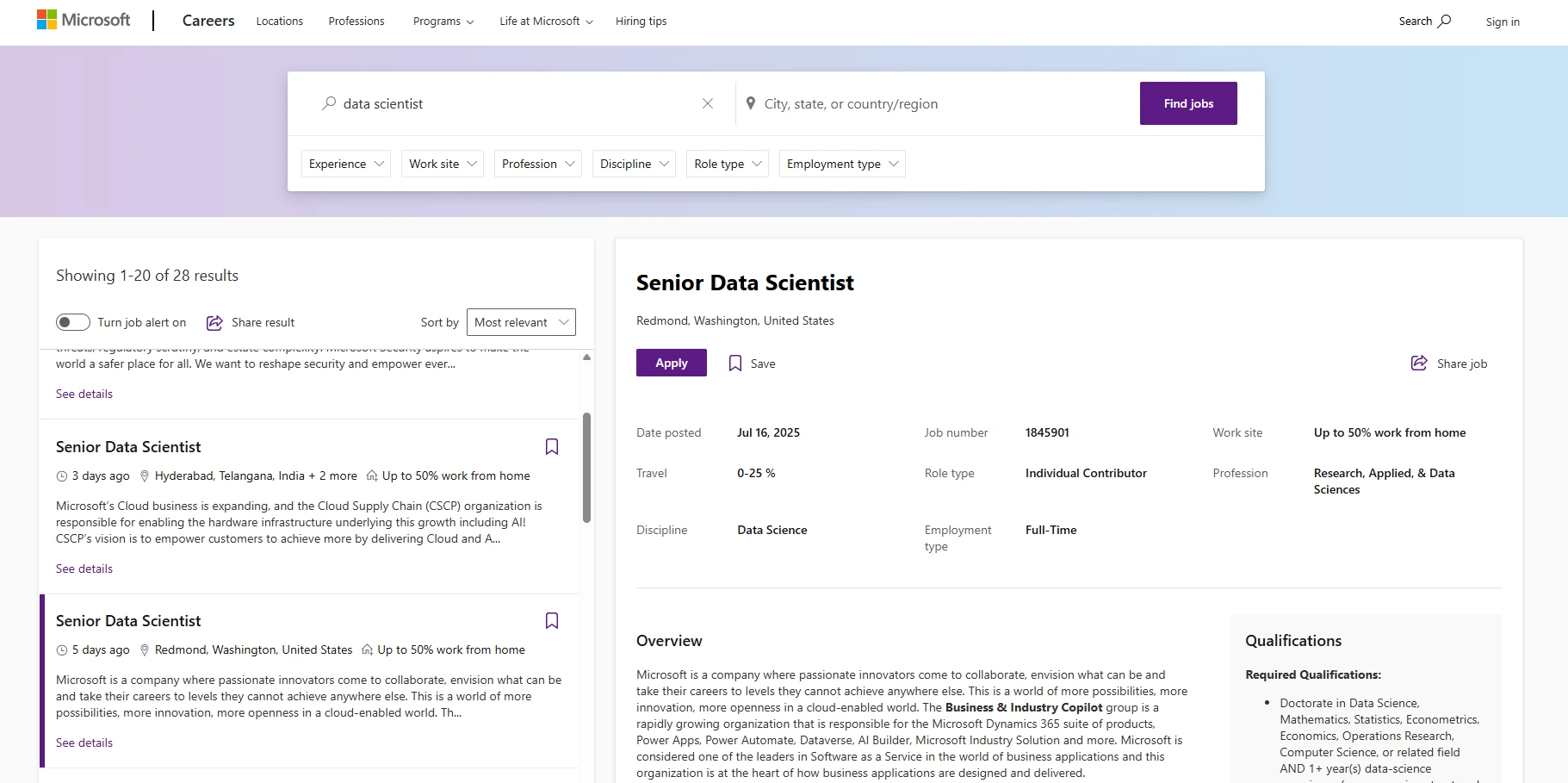
- Data Scientist Roles
The process typically involves:
- Recruiter screen: background, motivation, and role-fit questions.
- Online assessment: SQL, coding, and analytical problems via HackerRank/CodeSignal.
- “Virtual loop”: 4–5 interviews covering coding, ML case studies, product sense, and behavioral questions. Technical depth increases with seniority, sometimes including leadership interviews .[4]
2. Software Engineer Roles
Common format:
- Recruiter screen,
- Technical screen—45 minutes of live coding using MS Teams, leveraging one’s chosen programming language.
- Final loop—typically 3–5 problem-solving/design interviews (e.g., algorithms, system design, testing, API design).[5]
Microsoft Recruitment Principles
Microsoft is very transparent about how it hires its talent. On the career page, the tech company looks for candidates who reflect and embrace its values of respect, integrity, and accountability throughout the process. Here is what they focus on:
- Honest representation: Candidates applying to Microsoft are expected to present themselves truthfully at every stage of the recruitment process. This includes the accuracy of details provided on resumes, applications, coding assessments, assignments, interviews, and throughout the offer and onboarding phases.
- Responsible use of AI: While Microsoft encourages the use of AI tools to support interview preparation, such usage must be ethical and should reflect the applicant’s genuine capabilities. During interviews and assessments, candidates are expected to demonstrate their skills independently—without assistance from AI, other individuals, or external resources—unless specifically allowed.
- Adherence to responsible AI principles: Microsoft’s recruitment practices are grounded in responsible AI principles, including fairness, accountability, transparency, inclusivity, reliability, safety, and privacy. Candidates are expected to respect and align with these principles in all interactions involving Microsoft’s AI technologies.[6]
Microsoft’s Flexible Work Approach
As a global tech company, Microsoft champions a hybrid workplace model that blends autonomy, trust, and accountability. The company wants to empower every employee and future hires to design the work experience that best suits their style, while still delivering on collaboration and innovation.[7]
- Work Site
Job postings clearly state work‑site expectations:
- Up to 50% remote
- Up to 100% remote
- On‑site only
Roles listed as 100% remote are open to candidates anywhere in the stated country.[7]
2. Work Location
- Defines the geographic region where the work is based.
- Some jobs offer multiple locations within a country.
- Always check both the work site and work location fields in listings.[7]
3. Work Hours
- Flexible scheduling that aligns with each candidate’s productivity peaks and team needs.
- Not specified in postings. Hours are discussed directly with the recruiter or hiring manager.[7]
4. No “One‑Size‑Fits‑All”
- Microsoft avoids a uniform work policy. Instead, customized approaches are supported based on individual and team dynamics.
- Digital collaboration tools, regular check‑ins, and support systems ensure connection, mental well‑being, and ongoing learning—even in a remote-first context.[6]
Microsoft’s Core Culture Values
At Microsoft, culture is not a buzzword. It is what drives innovation, connection, and impact every day. From the relentless pursuit of learning and empathy with customers, to welcoming diverse voices and working as One Microsoft, this is where tech meets purpose.[7]
Microsoft’s culture is anchored in these foundational principles:
- Growth Mindset: Every employee is encouraged to continually learn, take risks, and embrace failure as part of the journey to greatness. Curiosity and adaptation are vital.[7]
- Customer Obsession: Teams work with an open, learner’s perspective to deeply understand customer needs and craft solutions that delight and empower users.[7]
- Diversity & Inclusion: Microsoft is dedicated to building teams that reflect global diversity. The company actively seeks out varied viewpoints, challenges personal biases, and fosters belonging through employee networks and resource groups.[7]
- One Microsoft: Collaboration is central. Employees work across teams and geographies to combine strengths and deliver the best collective impact.[7]
- Giving Back: Philanthropy is ingrained in the culture. Microsoft employees regularly devote time, resources, and skills to address global challenges. Giving isn’t just encouraged; it’s fundamental to living the mission.[7]
Microsoft’s Diversity & Inclusion Commitment
For Microsoft, diversity and inclusion are the foundation for innovation. You can see its scale and sincerity of efforts: from global ERGs and non-traditional talent pipelines to accommodations that welcome all skillsets. These programs are not just policies. They are Microsoft’s blueprint for an inclusive future.[8]
Their strategy spans from hiring and retention to embedding inclusivity across all facets of work:
- Inclusive Culture & Workforce: They prioritize building a workforce that mirrors our global communities, highlighting diverse experiences, backgrounds, and capabilities to shape better products and services.[8]
- Employee Resource Groups & Communities: Microsoft supports nine globally connected Employee Resource Groups (ERGs), complemented by peer-led communities. These networks, open to any employee, foster mentorship, belonging, and mutual support.[8]
- Targeted Inclusion Programs
- Military & Veterans: Programs like MSSA (Microsoft Software & Systems Academy) aid servicemembers and their spouses in transitioning to tech roles globally.[9]
- Disability Hiring & Accessibility: Accessible tools and accommodations (such as interpreters, extra assessment time, and privacy considerations) help candidates and employees fully engage .[9]
- Neurodiversity Hiring: Tailored interview processes, support resources, and virtual hiring events showcase Microsoft’s dedication to embracing neurodivergent talent .[9]
- Early-in-Career Pathways: Their “Early in Profession” initiative is designed for individuals from non-traditional backgrounds (bootcamps, self-taught, career changers), offering programs and internships to explore tech and leadership paths.[9]
- Strategic & Measurable Impact: Microsoft ties Diversity & Inclusion priorities directly to leadership goals, with measurable strategies that align with the senior executive team and CEO’s vision.[9]
Tools Used for Talent Recruitment
As a tech company, it is not a surprise that Microsoft uses generative artificial intelligence (Gen AI) as part of its recruitment process. Its modern recruitment tools include AI-powered candidate screening systems and virtual interview platforms that allow Microsoft’s hiring team to make data-driven hiring decisions.
- Microsoft 365 Copilot Chat: The tool assists Microsoft’s hiring teams throughout the recruiting process, from creating job descriptions and interview questions to supporting onboarding.[10]
- Copilot Studio: Microsoft showcases tools like an AI-powered “Recruitment Assistant Agent” that can parse job requirements, rank candidates from databases, and surface top matches for recruiters to review.[11]
What Other Companies Can Learn From
Implementing a tech-integrated, low-code framework like Microsoft’s can transform recruitment by automating routine processes, surfacing insights through smart search, and empowering data-led decision-making. This model demonstrates how HR teams can scale operations efficiently while maintaining high engagement and outcome quality.
- Leverage Integrated Low-Code Tools: Microsoft built a robust recruitment dashboard using Power BI to track key metrics, such as CV volume, acceptance rates, time-to-hire, recruiter efficiency, and cost-per-hire. They supplemented this with Power Apps (an FAQ interface) and Power Automate to streamline workflows.[12]
- Use Smart Search & FAQs: By integrating Azure Cognitive Search with Power Apps, they enabled recruiters and hiring managers to effortlessly access relevant information about HR processes through internal natural-language queries. This drastically reduces the time spent searching documents manually.[12]
- Automate Repetitive HR Tasks: Power Automate requests data from cognitive services and feeds it into the Power Platform tools—automating tasks like populating the FAQ app—so HR teams can focus on more strategic activities.[12]
- Drive Data-Informed Decisions: Combining dashboards and automated tools offers real-time visibility into recruitment effectiveness—enabling teams to pivot quickly, optimize budgets, and refine recruiter performance based on solid analytics.[12]
Conclusion
In conclusion, Microsoft’s recruitment process offers a powerful example of how a global company can attract, evaluate, and retain top talent through a strategic blend of values-driven culture, flexible work policies, inclusive hiring, and cutting-edge technology. From emphasizing transparency and ethical AI use to implementing low-code tools and data-driven decision-making, Microsoft sets a high standard for modern hiring practices. Organizations looking to enhance their own recruitment strategies can take inspiration from Microsoft’s ability to align purpose, innovation, and people-centric values across every stage of the hiring journey.
Frequently Asked Questions
Q: How long does the Microsoft interview process take?
A: The Microsoft interview process can last from several weeks to months and includes a pre-screening phase, multiple technical or role-specific interviews, and potentially an on-site interview with team members and managers. The timeline may vary based on the role, location, and number of candidates, with technical positions often undergoing more extensive evaluation.
Q: How many rounds are there in the Microsoft interview process?
A: The Microsoft interview process involves several stages to assess a candidate's technical skills, problem-solving abilities, and cultural fit. It begins with a phone or online screening, followed by technical interviews with coding and algorithm challenges. Successful candidates advance to an on-site or virtual assessment day with multiple interviews, including behavioral evaluations. The process can have three to six rounds, depending on the role and location.
Q: What is Microsoft looking for in candidates?
A: Microsoft seeks candidates with strong technical and problem-solving skills, a growth mindset, and a passion for innovation. They value teamwork, communication, and leadership, and emphasize diversity, inclusion, and integrity. Candidates should be committed to making a positive impact through technology, aligning with Microsoft's mission to empower individuals and organizations globally.
Q: How technical are Microsoft interviews for Product Manager or non-dev roles?
A: Microsoft Product Manager interviews emphasize leadership, collaboration, and strategic thinking, but candidates may still face technical questions to assess their understanding of relevant products and ability to work with engineering teams. While coding expertise isn't required, familiarity with technical concepts and effective communication with technical stakeholders is important. Despite being less technical than engineering interviews, a strong grasp of technology is necessary to drive product vision and strategy.
—
Citations
[1] Mactrotrends
[2] Exponent
[3] Microsoft Careers (Hiring Tips)
[4] Interview Query
[5] JobTestPrep
[6] Microsoft Careers (Flexible Work)
[7] Microsoft Careers (Culture)
[8] Microsoft Careers (Diversity and Inclusion)
[9] Microsoft Careers (Early in Profession)
[10] Microsoft Adoption
[11] Microsoft Adoption




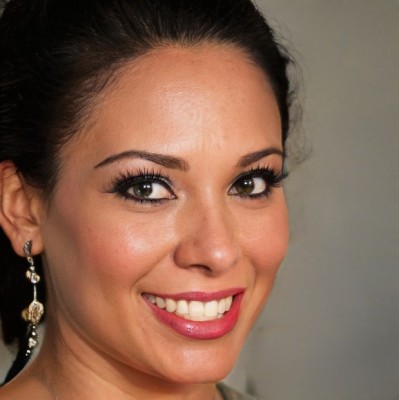
.png)

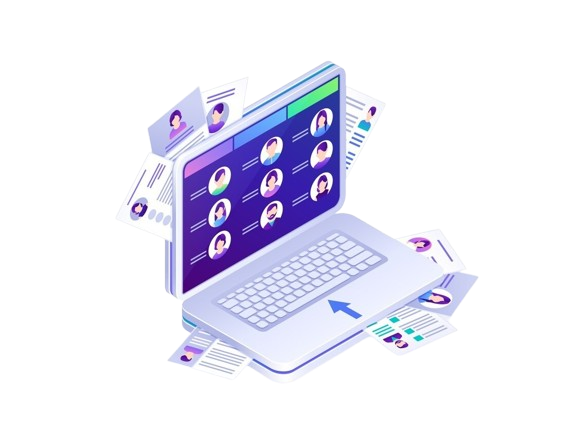



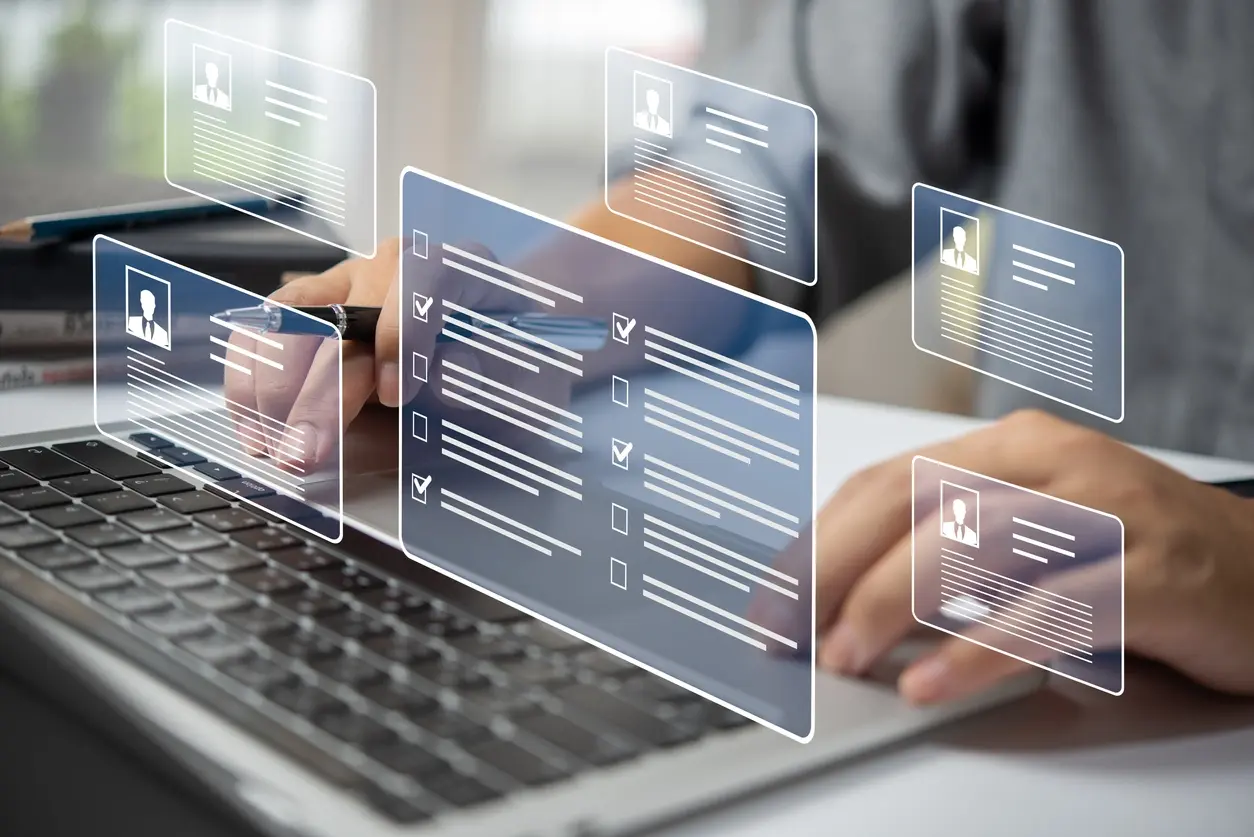





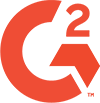


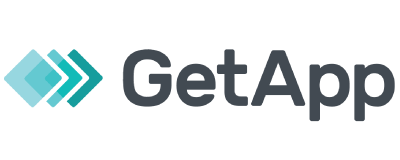



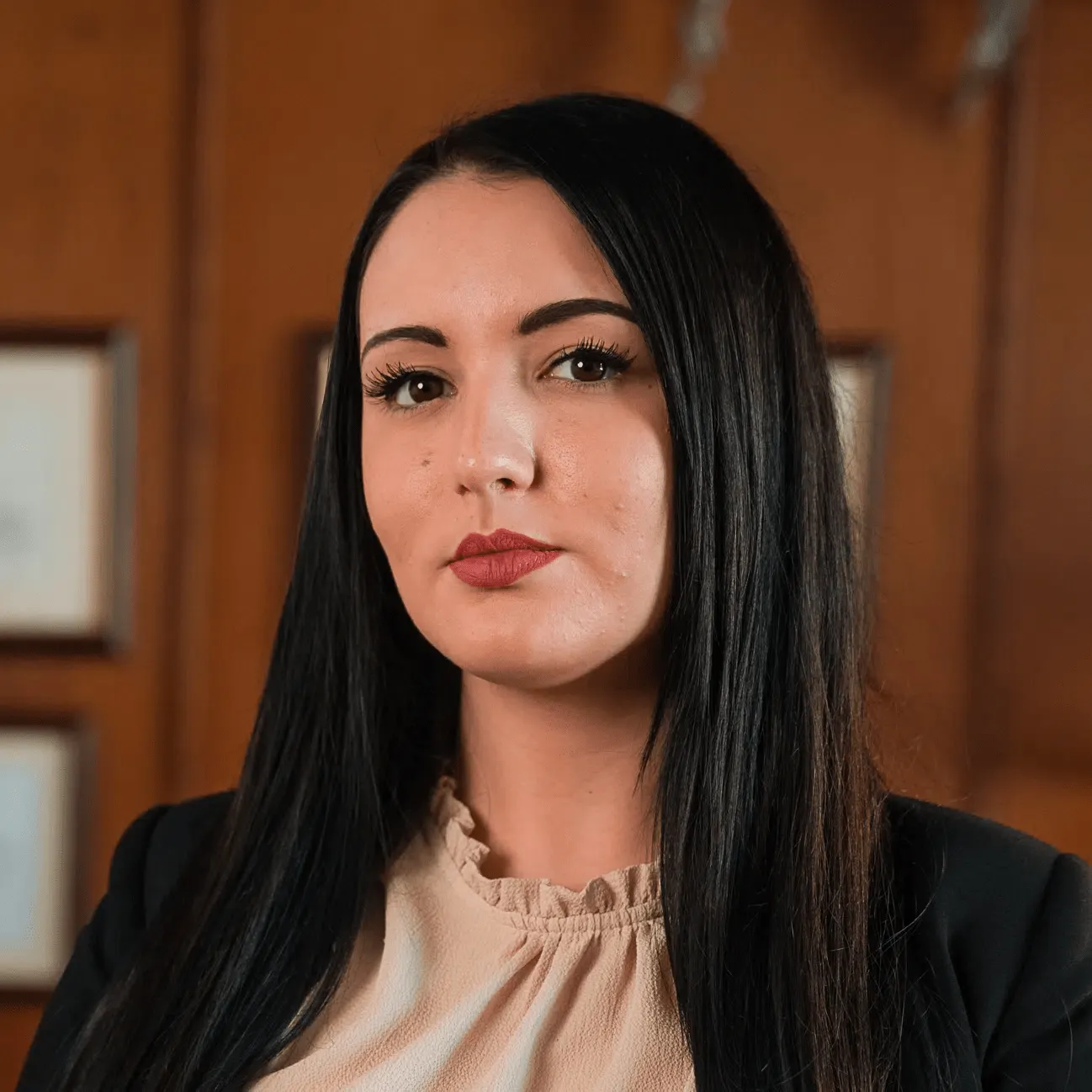



.webp)

.webp)
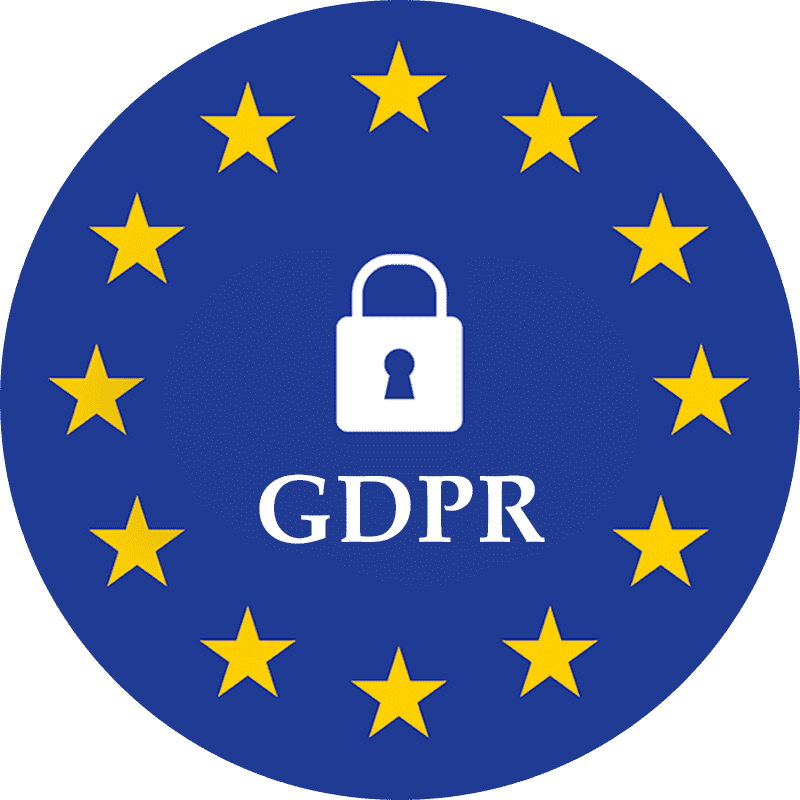
.webp)
